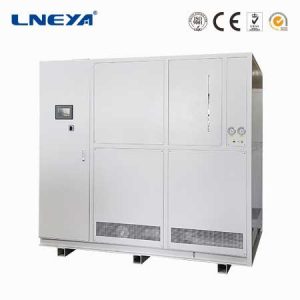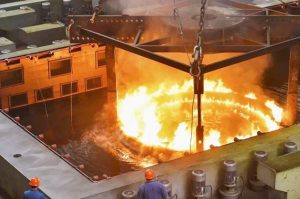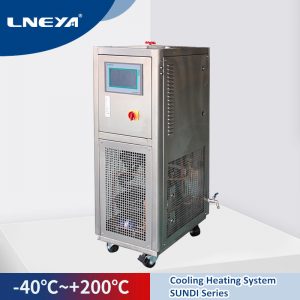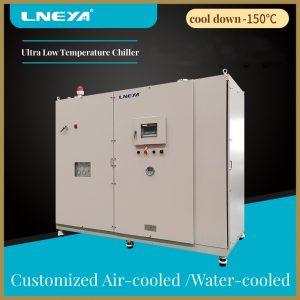What should I do if there is noise from industrial cooling and heating chillers?
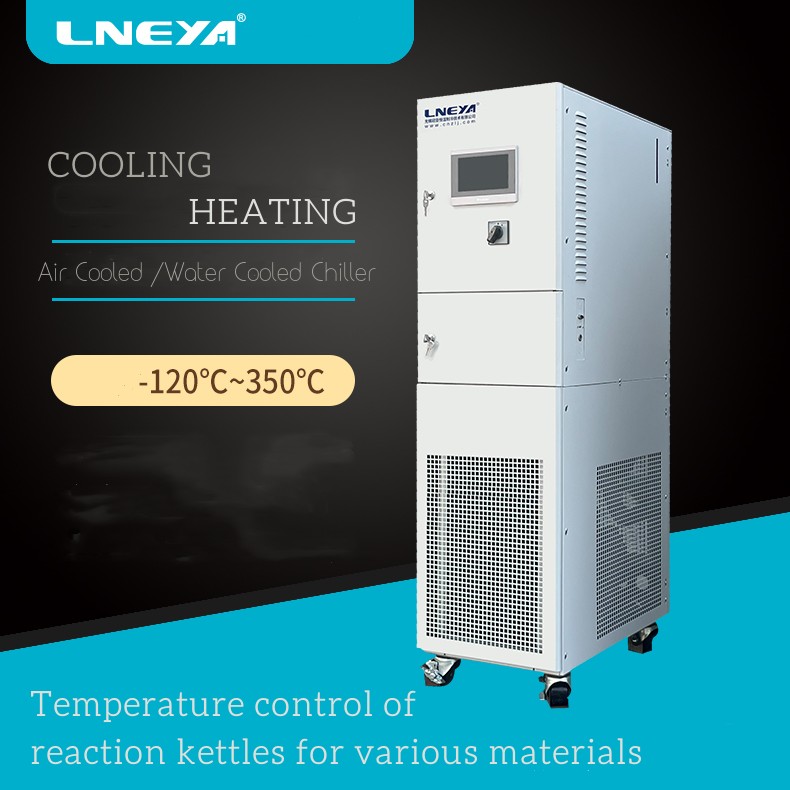
The industrial cooling and heating temperature control equipment adopts a PID algorithm temperature control system to accurately adjust the temperature based on the detected temperature and the set temperature value, improving the drawbacks of traditional manual control of the reaction kettle.
1. The industrial cooling and heating temperature control equipment, the chiller circulating pump, converts electrical energy into mechanical energy to promote the liquid phase circulation of the heat transfer oil, and transfers heat to the reaction kettle. The heat transfer oil exchanges with the materials in the reaction kettle and then returns to the oil heater, where it is heated again under the pressure of the pump and enters the next cycle. Through repeated cycles, heat is transferred and transported, heated and cooled, or the temperature of the reactor is maintained to meet the temperature requirements required by the production process.
2. When high noise occurs during the operation of the industrial cooling and heating temperature control equipment, the chiller needs to be inspected and promptly addressed if any problems are found. The internal components of the industrial grade cold and hot temperature control thermostat are excessively worn, such as the wear and tear of the cylinder body and valve plate of the plunger pump, as well as the wear and tear of the matching parts between the plunger and the plug hole, causing serious internal leakage in the pump. When the pump outputs high-pressure and low flow oil, flow pulsation will occur, causing high noise.
3. The pump valve plate is also one of the important components that can easily cause noise. Industrial cooling, heating, and temperature control equipment. During use, the water chiller may shorten the unloading groove and change the unloading position due to surface wear or oil sludge deposition at the opening of the unloading groove, resulting in oil trapping and higher noise.
4. When air is mixed into the cold water oil of industrial cooling and heating temperature control equipment, it is easy to form cavitation phenomenon in its high-pressure zone, which spreads in the form of pressure waves, causing oil oscillation and causing cavitation noise in the system.
Verwandte Empfehlungen
-
Wie ersetzt man das Vierwegeventil einer industriellen Kältemaschine?
1335The four-way valve of industrial refrigeration equipment needs to be replaced in time after a long period of use, so how to replace it? When replacing industrial refrigeration equipment, you need to first remove the connecting pipe connecting the ...
Details anzeigen -
Install a refrigeration unit for the circulating cooling water of the quenching tank
1715The quenching tank is a container filled with quenching medium. When the workpiece is immersed in the tank for cooling, it must be able to ensure that the workpiece is uniformly quenched at a reasonable cooling rate. It is a container that provide...
Details anzeigen -
Abschaltverfahren bei Ausfall der Hochpräzisions-Hoch-Tieftemperatur-Umwälzpumpe
1810Der hochpräzise Hoch-Niedertemperatur-Umwälzthermostat ist eines der Geräte, die in der pharmazeutischen und chemischen Industrie zur Unterstützung verschiedener Reaktoren eingesetzt werden. Wenn es während des Betriebs zu einem abnormalen Stromausfall kommt, sollten die Benutzer auf den Betrieb...
Details anzeigen -
The Role of Chemical Refrigeration Temperature Control Unit
1622In pharmaceutical and chemical plants, the raw materials inside the reactors involved in industrial production require rapid cooling and cooling. In order to achieve this goal, the reactor undergoes direct refrigeration and cooling, thereby indi...
Details anzeigen
 LNEYA Industriekühler Hersteller Lieferant
LNEYA Industriekühler Hersteller Lieferant









